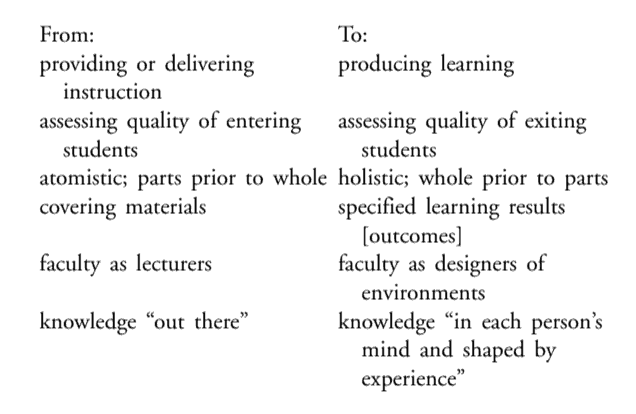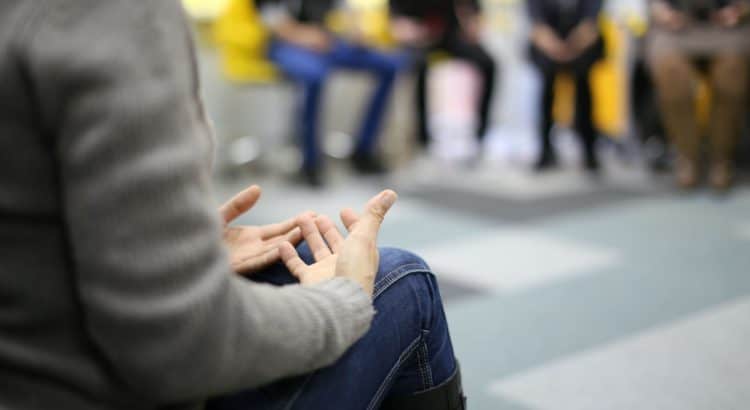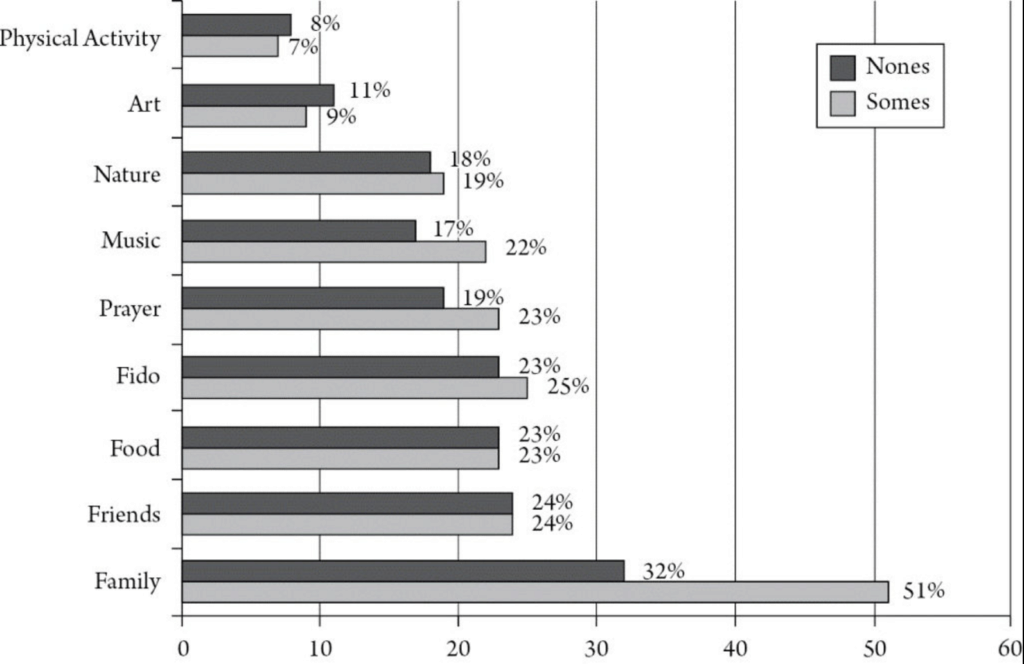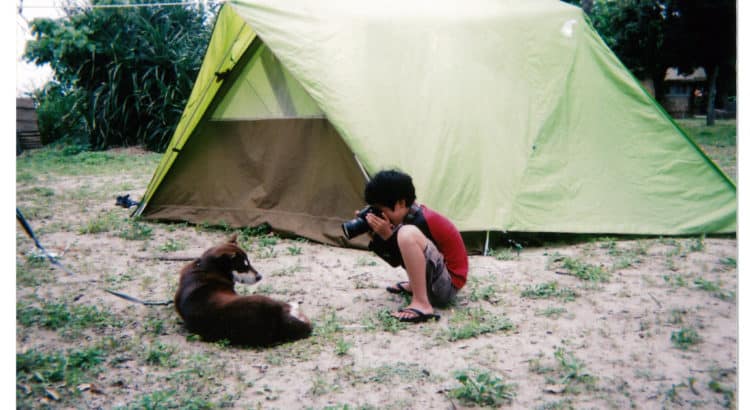This post is part of a series wherein I blog my way through studying for the doctoral certification exam in the Communication, Media, and Learning Technologies Design Program at Teachers College, Columbia University. Read the first post here.
Full disclosure: Amazon links in this post have my affiliate code built into them. If you follow one and purchase something, I’ll get a small commission. Thanks for supporting Learning, Faith & Media and my other work.
OK, I’m basically out of time for doing longer-form writing-to-learn exercises, though I’m still hoping to do at least one writing-to-practice session between now and Feb. 9 to satisfy myself that I’ve gotten my writing speed up to the point where I can write a 6-10 page essay in three hours.
So what follows is my master “learning media crib sheet,” a way of collecting what I have to say about the scholars I’m conversant enough with to possibly reference them in the course of answering whatever question I get asked.
Not sure how useful it will be, to be honest, but if you’re at all interested in this work, I guess having a bullet point or two about a big list of authors in learning media isn’t the worst thing. Probably focus more on the summary/concept bullet than on the connection bullet.
I’m organizing by our program’s social / cultural / cognitive framework, though the categories obviously aren’t mutually exclusive. I just picked the “bin” that seemed best—and helped me equalize my coverage.
Cultural
- “Ways of seeing”: There’s always a connection between the person looking at something and what they’re looking at. This includes lots of necessarily-non-neutral “built-in” assumptions, like that the audience for a nude European painting is a man (that this assumption itself assumes all men would be and no women wouldn’t be interested is of course part of the point).
- Connection: Explicitly identifying religious imagery as constructed and viewed in particular cultural and historical milieus presents an opportunity for faith learners to critically examine their own relationship both to the imagery and to these prior contexts and construct new and personally meaningful interpretations and connections.
- “Networked religion”: I’ve got this one pretty well internalized, but it’s hard to remember the five attributions so I’m writing them down: networked community, storied identities, shifting authority, convergent practice, and multisite reality.
- The relationship between religious practices and digital practices is complex. Campbell’s work gives us concrete theoretical tools to name and better understand the empirical realities of religion online.
- Ritual view of communication (central to thesis of “communication as culture”): We’ve over-emphasized the transmission view of communication (message from sender to receiver) and underemphasized the ritual view (mutual participation in a corporate act that works to create / structure / maintain a shared reality—or at least shared understanding of same).
- Connection: We can theorize process-oriented meaning-making activities as ritual communication. Indeed, this is an especially appropriate framing in the context of structured community-based faith learning, particularly in so-called “liturgical” traditions that already conceive of ritual as formative/educational in itself (“praying shapes believing,” etc.).
Hall
- Encoding/decoding: Defines communication process according to distinct and relatively autonomous phases (production, circulation, consumption, reproduction). Decoding is as important to encoding in a process that is truly discourse, contra “hypodermic needle” media effects tradition. The codes from producer and consumer can cohere or clash, resulting in hegemonic, negotiated, or oppositional position between encoder and decoder.
- Connection: These ideas lay a lot of groundwork for social semiotics and other ways of theorizing and enquiring of media and communication. Remix as an activity has the affordance of inviting explicit reflection on how a semiotic resource can be deployed with these different valences. Here we can see where critical media literacy and Digital Storytelling as faith formation practice form a virtuous circle of supporting the construction of complex, agentive understandings of religious and spiritual concepts, resources and practices.
- Race is a “floating signifier”— changes over times, takes our projections of cultural beliefs and anxieties, etc. The problem isn’t putting people into categories per se; indeed that’s inevitable. Problem is assuming those categories communicate unambiguously and authoritatively. Leads to an applied ethical and political philosophy that resists the desire for a “guarantee” and instead stays curious about possibilities and invites us to engage each other as unique individuals.
- Connection: It’s an argument in favor of flexible meaning-making activities that don’t assume particular group will be interested in a particular set of semiotic resources. Nothing wrong with using basketball stats as an invitation to authentic mathematics reasoning (Nasir), but it works against both culturally relevant pedagogy and anti-racist approaches to cultural studies if we assume that all black boys love basketball and want to think about math from that lens.
- HOMAGO: Collective ethnographic investigation of young people and their media worlds identified as key themes:
- “Patterns of representation” (textual genres) are engaged with in “social, routinized ways (participation genres); two they saw were friendship-driven and interest-driven (engagement in latter sometimes leads to former); participation frame extends notion of transfer to “supporting social and cultural world”
- “networked publics”: kids’ participation w/ media production tools in/on social networks is similar to past socializing processes with these differences: persistence, searchability, replicability, and invisible audiences; networked publics afford the opportunity for engagement that is multiple and layered
- “peer-based learning”: very effective, hard to transfer to in-school settings, often mediated by commercial interests at expense of school and family
- “While what is being defined as ‘new media literacy’ is certainly not the exclusive province of youth, unlike in the case of ‘old’ literacies, youth are playing a more central role in the definition of these newer forms.” (commentary below)
- Connections:
- “Participation genres” framing combined with final bullet about NML suggests that young people have something important to teach us about broader patterns of participation in the social and cultural structures of religious practice
- Digital Storytelling methodologies explicit privilege peer-based learning in a realistic setting and mode and have the potential thereby to positively affect the participation gap in.
Nasir, Rosebery, Warren, & Lee
- Students who aren’t necessarily high educational “achievers” as understood by normative schooling models and settings learn just fine in the midst of cultural practices outside of school. But young people from nondominant groups need explicit opportunities and support for connecting in and out of school learning in authentic and relevant ways.
- Connection: Traditional “Sunday school” classroom learning carries many of the same assumptions, approaches, and liabilities as in-school classroom learning. Digital Storytelling has the potential to bridge “in [Sunday] school” formal learning with the everyday cultural practices of faith learners. This is particularly important for learners from nondominant groups.
Pahl
- Participatory multimodal ethnography: My interest in Pahl is primarily methodological. She does the multimodality move of considering non-textual semiotic resources (time and space, delightfully) in meaning making, and the New Literacy Studies move of caring about language and literacy as hyper-local social practice (here, in the home).
- Connection: Methodological mentor text, basically. I also think her stuff on spatiality (“By seeing space as something not given but made, it is possible to interrogate space as bifurcated with
discourses of power”) can be a useful jumping off point for theorizing the role of the spatiality of church in my eventual sites of learning. - Visual culture and social semiotics of space: “My focus on the home as text encouraged me to ‘read’ the arrangement of stuff in the home as a set of signs”
- Connection: Definitely want to think about churches as a text young people read. Again, the idea of an arrangement of objects comes to the fore, although in this case the young people might not have a lot of agency in that. Though that’s not the case in more participatory churches.
- “Emplotment” & the productivity of storytelling: The latter is from Aristotle and stresses the process of, as it were, curating a storyline. It’s not just “one thing after another.” History and fiction writing are both creative acts that remake the world by colliding with it: “even the most ironic relation between art and reality would be incomprehensible if art did not both disturb and rearrange our relation to reality.
- Connection: Story as process rather than product is obviously a structural observation that goes well with the Digital Storytelling ethos. Diddo the creative part about creativity and (meaning) making, which also fits together well with a constructivist theory of knowledge and learning.
- “Viewers make meaning”: It’s an active, curatorial process, a “visual culture” practiced by individuals and communities of viewers (of film, TV, etc.). What they “do with” the products creators put out there is at least as important as what’s in the products themselves. In other words, viewers are as much “sign makers” as creators, to borrow language from multimodality/social semiotics (Jewitt).
- Connection: Digital Storytelling has the potential both to put faith themes in conversation with the visual cultures that predominate the lives of particular faith learners. And long-term engagement with such methodologies offers the opportunity for hyper-local languages of faith to emerge among particular communities of learners: strengthening group ties and providing opportunities for agentive enactments of identity and meaning.
Taylor (Secular Age definitely goes here—Language Animal is tougher to classify but nevertheless feels to me ultimately anthropological, along with Ricoeur)
- A Secular Age: Key insight is that “subtraction stories” of secularization (separate spheres, religious decline) don’t tell the whole story. Need to grapple with the cultural reality in which God’s existence is not assumed—there are viable alternatives.
- Connection: Need a religious education pedagogies that speak to the subtraction story, yes, and increased diversity. But also supports a posture of openness and critical thinking (and clear disciplinary epistemology if we can get to it). We won’t get to Fowler’s “individuative-reflective” moment if faith seems like a fairy tell forced upon us rather than a viable option that we may choose to explore.
- The Language Animal: Building on Ricoeur, he claims that moving “beyond sentences to texts” (a sort of critique of more cognitivist understandings of language, I think) we see stories as a constitute purpose of language and come to understand that stories are irreducible to the generalized lessons we draw from them—the lesson doesn’t fully signify without the context and the passage of time. Moreover, the creative function of stories is essential: “however I do it, through my story, I define my identity … It is through story that we find or devise ways of living bearably in time.”
- Connection: Religious educators can’t content themselves with teaching religious texts, however modern or relevant. We have to help the people we learn with treat their own lives as texts with something to teach them (see, of course Lambert).
Vasudevan
- Research pedagogies (w/ Wissman, Staples, & Nichols): An approach to ethnographic educational research that is multimodal, participatory, and (in) (co)-created spaces.
- Connection: A realistic and relevant research orientation for studying Digital Storytelling in any setting, but particularly one that is at least partly pedagogical (in this case, interested in the development of skills for faith reflection)
- Digital geographies: “emerging landscapes that are being produced through the confluence of new communicative practices and available media and technologies” (2010, p. 62) that connect the physical sites where people compose and edit new media “texts” or artifacts to the online social spaces where they share, discuss, and remix these texts
- Connection: An especially rich framework for understanding an activity that (1) is explicitly hybrid (digital media making in physically gathered spaces) and where (2) the material richness of the physical space and its connection to the subject matter of reflection may spark interesting connections (i.e., “How does it change the prompt to ‘tell an important story from your life'” if the workshop is happening in obviously sacred space?)
- Mobility & multimodality (w/ Leander): experience of online spatiality itself is multimodal (e.g., “map cycling”), and mobility further enriches this relationship (mobility is what makes the “DS in a cathedral” thought experiment possible).
- Connection: Projects like mine are a response to this article’s call to reconceptualize “current educational practices … in light of evolving digital capacities”
- Culture is “common” in more sense than one. Yes, it’s shared. But it’s also ordinary. It’s not just or primarily the rarefied formality of the tea room; it includes recognizably valuable productions across class and other dividers.
- This expansive understanding of culture parallels an important and later conversation about popular / everyday / “lived” / “everyday” religion (McGuire & Ammerman, respectively) as interesting, worthy of study, and always in complex conversation with church- or academy-sanctioned teachings and practices.
Social
- Dialogic interaction: For Bakhtin, language “comes alive” through exposure to the “dispersed light” passing through an atmosphere shaped by tense and productive ideology, shared and contested meanings, etc. There is a concrete individuality to language in use, and to participate in the dialogue between speaker, hearer, word, and object is to get caught up in both centripetal (unitive) and centrifugal (chaotic) forces.
- Connection: In addition to inspiring the theoretical lens (watching for centripetal/centrifugal) in studies like Pleasants’s, I believe there’s a lot to say about Bakhtin’s dialogic thinking and remix (where a word or other sign’s “baggage” gets leveraged in creative and often very explicit ways—see also Hall) as well as in the critical move that pulls social semiotics in a more explicitly dialogical direction to becoming multimodal participatory ethnography (this is Kress + Street, I learned Thursday from Lalitha, who had a really powerful story about a particular lunch with Kress and how theory is often the child of researcher relationships). Regarding the latter, we need to better account for the particularity of the participants in the dialogue as we make and remake signs together.
- Churches as social collectivities: Cheong claims churches today are enacted and even in some sense composed of the communications exchanged between and among leaders and members. Cheong notes that theorizing faith communities in this way presents an opportunity for research into “new forms of spiritual organizing and religious authority.” As social media posts and other online artifacts of congregational communication accumulate, they have the effect of making visible “a social collectivity that acts as a coherent whole, and whose aspirations, operations, and success depends on communicatively constitutive forces.”
- Connections: I like that latter point of artifacts as “tracings” in the ethnographic sense. And I like that this is a “secular communication scholar” reaching basically the same conclusion about what a church is as theologians Scharer & Hilberath, to whom Hess appeals in the theological portion of her digital storytelling as faith formation proposal.
Drescher
- Nones: Drescher’s ethnography of the religiously unaffiliated makes the crucial insight that answering a demographic question in the negative does not a social or cultural group make. Her data clearly show that the very meaning of religious affiliation and non-affiliation is becoming (even more) highly contested. Nones choose not to affiliate for a wide variety of reasons, and many of them nevertheless assemble a rich and often religiously varied palette of spiritual practices.
- Connection: Expansive understanding of religious education in the age of the None will need to explicitly account what she calls their Noneness. This has implication for sites of learning (maybe not at the church), motivation (certainly not to “become a better Episcopalian”), access, and more. In this respect and for this audience, Digital Storytelling is best understood explicitly as a spiritual practice of identity development rather than a faith formational (and especially not religious educational) intervention.
- Habitus: Drescher’s extended discussion of the faith implications of today’s digital habitus (marked by immediacy, transparency, interactivity, co-creativity, integration, and distribution) provides both thick description and practice-oriented.
- Connection: Drescher’s explicit connection between Bourdieu’s sociological concept and the longstanding Christian tradition of a “rule of life” provides an enduring way for congregations to talk about the faith values involved in online participation and offer some faith-based understandings for the critical use (and sometimes non- or decreased use) of new media tools and spaces.
- Enactive and recognition work: Gee’s “social turn” article helped me get my head around NLS and the broader movement of which it was a part. And it introduced me to these two terms: the work I do to try to get you to see something a certain way, and the work you do (see also Hall’s hegemonic, negotiated, and oppositional readings).
- Connection: The “enactive work” stuff is one way of framing some of my advocacy for a particular future of religious education (in light of Taylor, Drescher, etc.). Here’s the argument from an earlier post:
- Educator does enactive work showing that a religious worldview makes sense. Students recognize such work as sensible or not. We who hope to pass on the faith think this piece is the most important, and we are wrong.
- Educator does (partly enactive, partly recognition) work of modeling moderate, critical religious belief in a world where religious diversity is a fact of life and in which religious fundamentalists of all stripes are a significant contributor to global conflict and play an outsized role in tacitly defining faith amid widespread religious illiteracy. This piece, I believe, is actually more important to the future of denominations like mine.
- Educator, together with students in either an affirmative, negative, or ambiguous mode, make sense of what these God beliefs mean for the business of everyday living. This piece, I believe, is where activities like Digital Storytelling, play a crucial role.
- We can understand “presentation of self in everyday life” through the metaphor of theater: “front stage” performances assume a public audience and certain types of social practice and “decorum” between audience and players, whereas backstage different kinds of player-to-player relationship exist. Again, there’s no “neutral,” no stable / monolithic / singular / essentialist identity. There is role and context and the masks associated with them.
- Connection: Goffman’s understanding of identity is foundational to (but not sufficient for) a paradigm wherein agentive identity negotiation is recognized and encouraged. In particular, the idea of “different stages” whereon we perform our identity has a particular richness for thinking about the relationship between “in church” and “out of church” religious identity and belonging.
- New Media Literacies: Jenkins’ could easily be filed under “cultural,” but for me the thrust of the participatory cultures/NML work is that the skills in question (play, performance, simulation, appropriation, multitasking, distributed cognition, collective intelligence, judgment, transmedia navigation, networking, negotiation) stress, on balance, the sociality of online spaces and the work young people are doing there. Moreover the titular challenges (the participation gap, the transparency problem, the ethics challenge) are predominantly social.
- Connection: In addition to supporting the conclusion that the various skills Jenkins names and Digital Storytellers employ (play, performance, appropriation, collective intelligence, transmedia navigation, and negotiation—at least) have a role to play in participants identity development, this work also underscores the way that religious education can play a role in broader issues of social justice and social capital. Many of those served by—or potentially served by—congregational after school and (to a lesser extent in historically wealthy denominations) Sunday school, need the opportunities that NML work provide. Opportunities for young people to increase participation in digital social spaces, critically examine the role of media in constructing our social world, and engage/mitigate “[t]he breakdown of traditional forms of professional training and socialization that might prepare young people for their increasingly public roles as media makers and community participants,” etc.—this is the potential intersection where “21st century skills” (a contested term, admittedly) serve both churches’ faith formation mission AND their justice mission.
- Multimodality and screens: New technologies are remediating reading and writing practices. We can see this via a multimodal analysis of classroom learning artifacts, among other places. School-based conceptions of reading and writing need to adapt to these new contexts, applications, and texts.
- Connection: This is a secondary or tertiary sort of benefit of my research (wanting to take seriously diSessa’s “tool rich cultures” point and Nathan’s dislike of “21st-century skills”), but I do think that part of “selling” Digital Storytelling workshops to certain participants (or more likely their parents and teachers?) is the promise to get in some “practice” for these new literacies (probably with an explicit appeal to “21st-century skills”), particularly if schools continue to be slow to change curriculum and teaching practices.
Kress & van Leeuwen (especially via Jewitt, Bezemer & O’Halloran, where these quotes all come from)
- Social Semiotics: Taking “language as a social semiotic” (Halliday) acknowledges that there are more general grammars that apply to a wider variety of modes, of which linguistics is the relevant study in the written mode. Social semiotics “emphasizes the agency of the sign maker”—and note that both “writer” and “reader” ultimately make signs through the original construal and the interpretation (see also Sturken & Cartwright, Hall, etc.). The key insight here is that visual structures “realize meaning as linguistic structures do also … [but] the way in which it will be said is different.” Social semiotics as a multimodal method aims “to recognize the agency of social actors and social/power relations between them.” Extending it to multimodal ethnography aims “to make visible the cultural and social practices of a particular community.”
- Connection: Basically my whole plan is to operate in the space. The research participants and I are sign makers using the variety of semiotic resources available to us for particular communicative purposes and with particular communicative effects that I want to better understand. I even took a first stab at an overarching research question in an email earlier today: How do young people deploy the semiotic resources of their daily lives and interests when telling meaningful personal stories in a faith or faith-adjacent setting?
- Sociocultural theories (communities of practice, activity theory, etc.) fail to adequately account for dynamics of identity, agency, and power, including sometimes reinforcing the assumption that there’s a one-to-one correspondence between context and choice of Goffman’s “mask.” Power is claimed / enacted by individuals participating in agentive and non-agentive ways in larger social structures. Incorporating critical theory (e.g., critical discourse analysis) can mitigate this liability of sociocultural theory.
- Connection: As a straight white male researcher studying a largely white and privileged and very conflict avoidant system, failing to incorporate critical perspectives would be a wasted opportunity and merely contribute to the mire of social problems already active in many faith and faith-adjacent communities. The decision to incorporate multimodal inquiry and learning methods into the work is a first step, since criticality is “baked in” to the decision to expand notions of “what counts” as text (Vasudevan) and as educational activity in learning spaces (recall the “fancy literature” versus “horror movies/comics” anecdote from the article’s introduction).
- “Stakes of participation”: Youth-oriented online creative activity happens in a social spaces where contributors are especially delirious of the approval of their peers, and in which they are working out a whole host of socio-developmental questions (e.g., anxieties about the 2016 election on Scratch and elsewhere). These windows into youth sociality can help us strategize about social support and new kinds of education for civic and community engagement, etc.
- Connection: In-person digital making activities may provide opportunities for adult mentors to provide such support (church people would add “pastoral support”), and the confidence and “precedent” for further creative media making that has the potential to span the spaces and themes of school, home, faith, community, and online setting.
- Multiliteracies: The group’s “attention to the growing variety of texts and design practices made possible in a world of increasing technological, cultural, and linguistic diversity” (a Vasudevan summary) was characterized in my reading by a focus on pedagogy, a concern with various work contexts, a multimodal understanding of text, and a prescient understanding of the need for students to navigate disparate, layered lifeworlds and participate in a newly pluralistic civic life.
- Connection: Here again, an argument something like this might have a secondary or tertiary place in my study by serving as the sweetener for why one would want to participant in an activity like this (“preparation for 21st-century multicultural working and living” being a somewhat sexier proposal than “development of mature and health religious identity” in an era when the priorities of religious institutions carry little cultural cachet.
Pleasants
- Theoretical framework for a digital storytelling participatory ethnography (phew): Pleasants attended to Bakhtinian ideas in her study as director of a community digital storytelling project: Centripetal forces “allow[] us to be ‘seen’ by others as enacting recognizable identities,” and centrifugal forces “provide opportunities for innovative interpretations of existing language and discourse in the service of making each of our identities a uniquely fashioned construction rather than an essentialized and static caricature.”
- Connection: Mentor text for framing a study like the one I’m interested in doing.
- Social capital: Putnam notes its steady decline in the second half of the twentieth century (and more recently beyond), that is happened across nearly every sphere of American life, and that the Internet cannot be the cause (because it wasn’t around, certainly not impactfully, until very late in the game).
- Connection: Congregational decline should be interpreted against the backdrop of this wider social story, and proposals for rebuilding capital in and through religious institutions should not be proposed in isolation from that story. Community-based, faith-adjacent Digital Storytelling projects (and broader HOMAGO initiatives hosted or co-sponsored by religious organizations) are just such a holistic attempt.
- Communicative Theology: These theologians make the case for communication as the act of theology (God to humanity, communion and community as communication, etc.) and construct a participatory method from Ruth Cohen’s Theme-Centered Interaction. Could also have “filed” more appropriately under cultural for their emphasis on the importance of theorizing “church-within-world” (“globe”) rather than “church-against-world.”
- Connections: Love this theological framing and its setup for a sociocultural and social semiotic study of “participating theologians” (!) being the church by working out their theology in community (see also Cheong above).
Cognitive
- Experiences of artifacts: Ackerman thinks through the consequences of a radical constructivist stance in the context of design, which of course is oriented toward creating objects that others will experience in certain ways: “How can designers take responsibility for the qualities of their creations if they assume—I caricature the constructivist stance—that people will use them as Rorschach stains anyway?” For me her key point is “Artifacts set limits to people’s reconstructions. They do so by opening up greater or lesser mental elbowroom (Spielraum in German).” There’s a parallelism here between sign making (social semiotics) and tool making (constructivist design). And thus: “People learn by switching roles from being producers to being critics, from being actors to being audiences, from holding stage to moving into the background,” and sometimes it happens in their own heads.
- Connection: Ackerman frames in Piagetian terms (the push-pull of assimilation and accommodation) the same kind of design thinking questions present in frameworks like multiliteracies and social semiotics. I resonate with her warning that to move too far in either direction risks a debilitating over- or under-determinism and robs us of the chance to engage in “Learning as a conversation with artifacts.”
- Cognitive structures: Categories (like data types in computing), semantic networks (like trees), schemas (like objects w/ “isa,” member data, etc.), and scripts (duh) are all empirically supported cognitive structures that have implications for how we think about people’s cognition and learning. Hence early educational focus on naming- and sorting-type activities and the usefulness of ritual.
- Connection: Not a huge connection, but this is my weakest “bin” and so having some basic ideas on the crib sheet is a good thing. The clearest connection I can make is that learning that relies on ritual has a tendency to be undermined by the power of scripts, precisely because scripts allow you to ignore details that may be important. Awareness of how faith learners are using religious categories, ritual scripts, etc. is important for breaking open concepts, i.e., making the familiar strange.
- Embodied/grounded cognition: Here’s the schematic account of this way of thinking about the body’s role in thinking: “As [a bodily] experience occurs … the brain captures states across the modalities and integrates them with a multimodal representation stored in memory … Later, when knowledge is needed to represent a category … [the] multimodal representation captured during experiences with its instances are reactivated to simulate how the brain represented perception, action, and introspection associated with it.” This has implications for the kind of learning where we move around, including between spaces that represent meaningful difference.
- Connection: A theory of cognition that speaks to the wisdom of religious tradition like various kinds of movement-based prayer, including movement in space (think pilgrimage, sacred architecture, etc.). This passage ought also to remind us of Lambert’s account of the cognitive “work” of multimodal/multisensory storywork. Basically there’s too much resonance between the embodied account of multisensory memory and multimodal theories of social meaning making. These theories should work well with each other.
- Cognitive apprenticeship: There are six facilitation methods in this tradition to help pass along the tacit knowledge needed for strategic action: modeling, coaching, scaffolding, articulation, reflection (both metacognitive, note), and exploration.
- While LPP / community of practice mechanisms may somewhat apply in a digital storytelling workshop, it’s definitely possible to have a room of all novices. Moreover, Lambert’s Digital Storytelling takes its method from both the cognitive model of the work to be done and the media logic of the design task. So it’s worth it to bring to the facilitation task the wisdom of this well respected situated pedagogical framework. It wouldn’t be hard to do a “cognitive apprenticeship analysis” of the Lambert method as a kind of check or extension. A lot of it is built on, I think.
Design-Based Research Collective
- DBR: Proposes closing the “credibility gap” in education research through a methodology guided by an iterative design process. Critiques the “randomized clinical trials” method for its inability to grapple adequately with context in many situations (required if one is to control all but one variable). Instead, “explicit concern in design-based research for using methods that link processes of enactment to outcomes has power to generate knowledge that directly applies to educational practice. The value of attending to context is not simply that it produces a better understanding of an intervention, but also that it can lead to improved theoretical accounts of teaching and learning.”
- Connection: I think it’s quite likely that initial learnings from my research would need to inform a program of design-based research intended to iteratively work through the inevitable challenges we’ll identify in developing a pretty radically different approach to religious education from “Sunday school as we know it.”
diSessa
- “Conceptual ecology”: Acknowledges the need for greater precision in theorizing of scientific reasoning about concepts, including their type, “grain size,” and configurations. If we’re not clear about the precise nature of a given conceptual ecology, it’s hard to (1) know if students have reached competent understandings, and (2) conduct cognitive research in such a way that leverages the value of complex systems theory as a cognitive model.
- Connection: I wouldn’t want to lean on this too heavily, but it seems to me there’s an analogous point to be made about research into student understanding of theological concepts. A celebration of the adaptability of theological concepts is surely appropriate, but frequently student conceptual understanding is fuzzy rather than flexible. Especially in an educational domain where assessment is minimal, finding ways to be precise about the concepts we want our students to learn and how we might observe such developing understandings in action might be a useful exercise. One wonders about the existence of conceptual structures representing an entirely different sort of “phenomenological primitives” when you get a group of people talking about their experiences of prayer, for example.
- “Tool-rich cultures”: “Scientific tools in school are almost always ends in themselves, or they are related vaguely and artificially to ‘doing well in school’ or ‘preparing for the future.’ Problems are assigned and understood by everyone as thinly veiled occassions to exercise tool knowledge or skill rather than as reasons for the existence of the tools. Many schools are really designed around incompetence in the sense that any real understanding is a sign to move on to the next topic. Pride in accomplishment is seldom reached.”
- Connection: This is the pitfall of “21st-century skills” discussions. Point of my work is not to teach the software or even storytelling per se. It’s to help students develop their inherent desire and skill in telling powerful stories that are meaningful to them. I have a high level of trust that beginning by valuing student perspectives about what’s important and trusting that tool skill, content knowledge, and identity negotiation will happen if they have the chance to explore their perspectives in well-supported tool-rich cultures.
- Efklides reviewed the metacognition literature and proposed a “multifaceted, multilevel” model. Instead of just the object level and the meta level. She names the object level as explicitly nonconscious and notes that loops of cognition/cognitive regulation and emotion/emotional regulation happening within the object level. The metalevel, reached through monitoring, is the personal awareness level and begins with a metacognitive experience before identifying metacognitive strategies with which to control the object level, possibly with the intervening help of metacognitive knowledge. There’s also a meta-metalevel, a social level, reached through inter-personal monitoring or reflection, that begins with an appeal to metacognitive knowledge before again choosing a strategy with which to control the lower (here: meta) level, possibly with an intervening appeal to metacognitive judgments. (This is what happens when you try to turn a picture into text, and when you study a topic that is so full abstractions, so … well, meta, that you can’t help but resort to jargon.)
- Connection: Metacognition is essential throughout the Digital Storytelling methodology. As participants examine the experience and memories associated with a particular digital story, they’re asked to “own their insight” and “own their emotions” through a process of that is inherently metacognitive (What was I thinking when this event happened? What was I feeling? What do those thoughts and feelings mean to me know? How did they change me?). Efklides model is especially helpful for thinking about the Digital Storytelling enterprise in that it incorporates the meta-metalevel, acknowledging that we can skills in monitoring and reflecting on our thinking and experiences through our conversations as we do this work together. On the explicitly religious side of things, I’m surprised religious educators don’t think and write more about metacognition. Theological reflection is treated as the formation activity par excellence, but it is usually theorized as a hermeneutical experience (interpreting the tradition in light of life experience and vice versa) rather than a metacognitive one (critically examining one’s own meaning-making processes). In any event, I believe explicit metacognitive development is probably essential for the tacit benefits of making to be realized in this or maybe any context. Metacognitive monitoring is just too essential to the process of making (and discovering, and remaking) connections.
- Flawed but useful “stages” model of faith development (following Erikson, etc.) names a key transition from “synthetic-conventional” faith to “individuative-reflective” as requiring the believer “not simply to replace their old tacit ideological system with a new one but to choose from a place of freedom. Authority must be relocated ‘within the self’ (p. 178–179).”
- Connection: Point of contact between cognitive theories of faith development and the dynamic theories of agentive identity negotiation discussed elsewhere (Bakhtin, Hall, Lewis & Moje, Pleasants, etc.). See also Robert Kegan’s third- and fourth-order meaning-making (cross-categorical connections and constructions, respectively) from his adult learning theory.
- Clinical cognitive interviewing: If we hold a constructivist theory of cognition and learning, then we expect personal knowledge constructions to vary greatly from person to person. Something like clinical cognitive interviewing—where we ask our participants to explore with us the nature of what and how they’re thinking—is ultimately essential.
- Connection: In my reading, the move from “pure” social semiotics to participatory multimodal ethnography represents a dissatisfaction with traditional ethnography’s distance from participants’ subjective experience in precisely this way (Sarah Pink via Bella Dicks). Plus I continue to be intrigued by the possibility of researcher-participant podcasting see also Soep & Chavez) as a way of turning the clinical cognitive interview into a more participatory research method.
- Activity theory: There are three patterns of learning in this situated theory of learning, a general model that accounts for the interrelations between instruments, subject, rules, community, division of labor, and finally the object of learning that leads to some outcome.
- “Top down” explanation where individual learns by participating and the “learning is explained by properties and processes within the activity system”
- “Bottom up” explanation where the system (as a whole) gets better through “change over time” and “learning is explained in terms of mental representations and behaviors of the participating individuals”
- “Horizontal” explanation where system (as a whole) learns “and this learning is explained in terms of properties and processes of the activity system” (I think there’s some distributed cognition assumptions in here?)
- Connection: Honestly I don’t really get/like activity theory but I wanted to have some notes just in case.
Hess
- There’s no obviously right bin in which to place Hess’s advocacy for Digital Storytelling as faith formation, but I think cognitive is probably the most appropriate. This is partly from her cautious appeal to the mirror neuron literature, partly from her appeal to Kegan’s adult learning theory (and its attention to cross-categorical connections and constructions), partly because of her desire that religious education join the new educational culture emphasizing learning over teaching, and partly from her sense that it is compatible with a “community of communities” ethos appropriate in light of growing religious diversity.. In many ways, this final aspect of Hess’s proposal taps into the wisdom of Papert’s quip that “the goal is to teach in such a way as to produce the most learning for the least teaching.”
- Connection: Hess makes clear that these cognitive appeals connect well to the religious values of this kind of learning. There’s a connection, I think, between a “tinkering” mindset and what Hess calls “meditative” meaning-making: slowing down, trying things out, getting feedback, etc.
- We could put Lambert in any bin, but I really appreciate his synthesis of the cognitive literature of how stories work on us. Memories formed through rehearsal; pathways stronger in the presence of “affective relationship to the sensory information”; “life lesson”-type memories inevitably the result of strong emotion or interaction with people we’re close to; here we have access to the embodied “simulation” (Barsalou) in the form of a multimodal representation (a story that we relive and can retell); retelling sets scene for inter- and intra-personal exploration.
- Connection: We reconnect with positive experiences and “redeem” negative ones through the rehearsal and reinterpretation of story.
- Situated cognition & situated learning/LPP/communities of practice: Cognition is situated. It takes cues from the environment as well as from the dynamic and contested goals and strategies that take place (e.g., Lave’s study of grocery store arithmetic). Moreover, learning is situated in that it takes place within communities of practice. Within particular domains, practice is held by the community and passed along (or not) to novices through the course of their “legitimate peripheral participation.” First they make smaller contributions, then larger ones as they gain confidence and experience.
- Connection: The model here raises important design and methodology questions: Is my learning activity sufficiently “dilemma-driven”? Is there a range of experience within the community of practice, beyond just the “expert” facilitator and “novice” participants? Are activities designed such that peripheral participation is possible/encouraged for people of all skill levels?
- Constructionism: I’m not going to not cite Papert. We build new knowledge in our minds as we build/tinker with our own creations. Especially rich and meaningful learning happens when we “play with problems.” This gets us a little closer to learning French by going to France than by taking a French class, to borrow a famous example. Papert saw computers as offering the possibility of learning math in “Mathland.” One thing I resonate with very strongly in Papert’s work is his embrace of the concrete, which is refreshing from a mathematician.
- Connection: My whole interest is getting people to think of their whole lives rather than the church narrowly or “church school” more narrowly still as the analogous “faith land.” Nevertheless we know church is an important (possible) site of religious knowing / being / practicing / meaning-making, so connecting that little island “faith land” to, as it were, the mainland is important. A digital geographies approach (Vasudevan, Leander & Vasudevan) seems especially rich here. And the affordance of creative production really support the movement from abstract theological concept to concrete experiential reality.
- Constructivism: Have been actively discouraged from citing Piaget directly, but again, certain concepts would be embarrassing to screw up so I want them down on paper. (Yes, I’m literally going to print out this blog post and bring it with me.) Constructivism theorizes that learning is a process of building our own knowledge/understanding. When we encounter something we want to understand, we either assimilate it—fit it into our existing knowledge—or accommodate our existing knowledge to the new information.
- Connection: This cognitive model fits well with the values of participatory research, communities of practice learning, etc., de-emphasizing expert deposit of knowledge and celebrating the existing understandings and experience of all participants (see also Freire, of course). More specifically, this model supports certain built-in strategies for religious educators, including building on the baseline understandings of theological concepts formed in liturgy and of spiritual experienced formed both in liturgy and everyday life (practices of rest/Sabbath, say).










